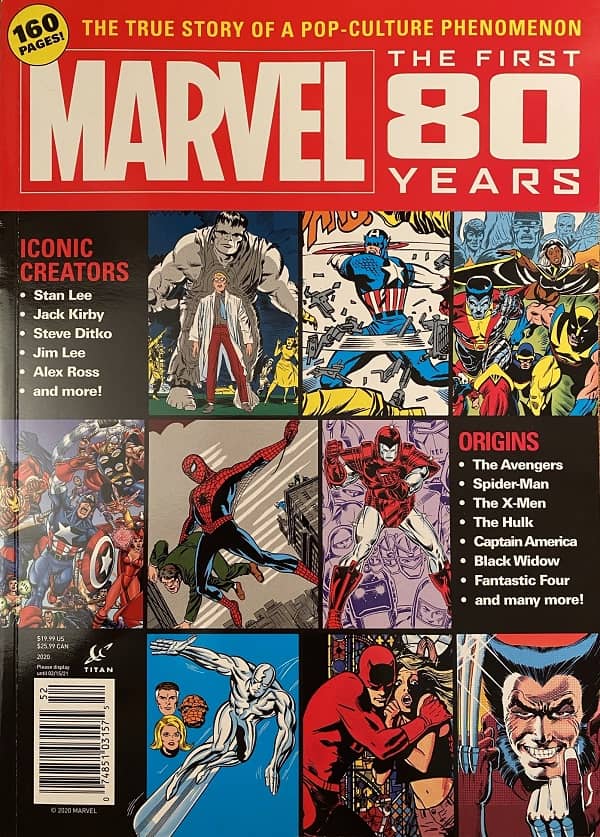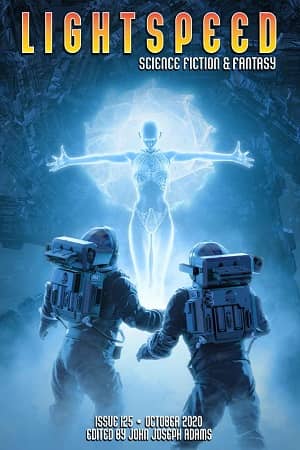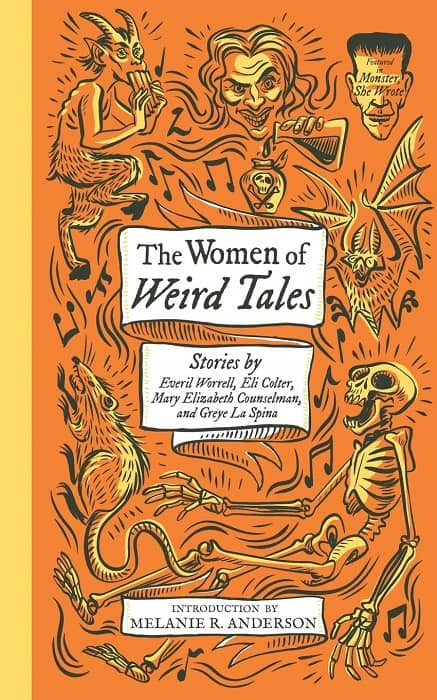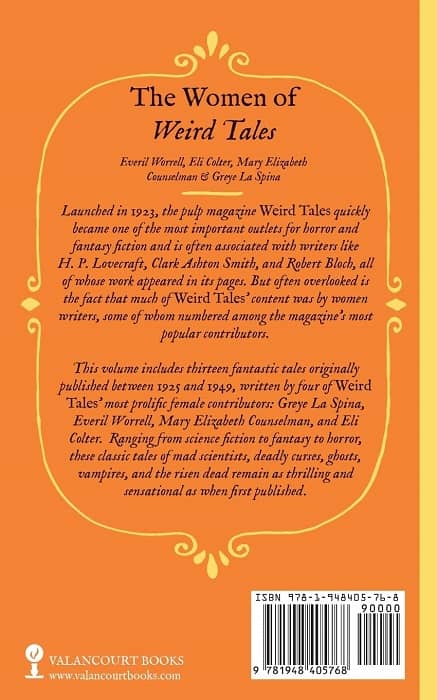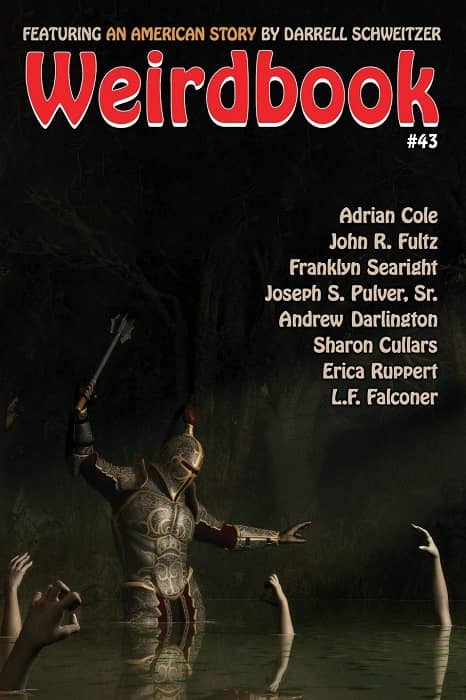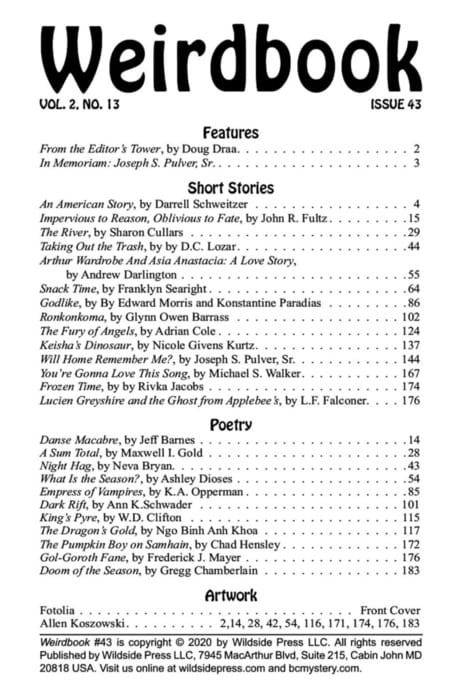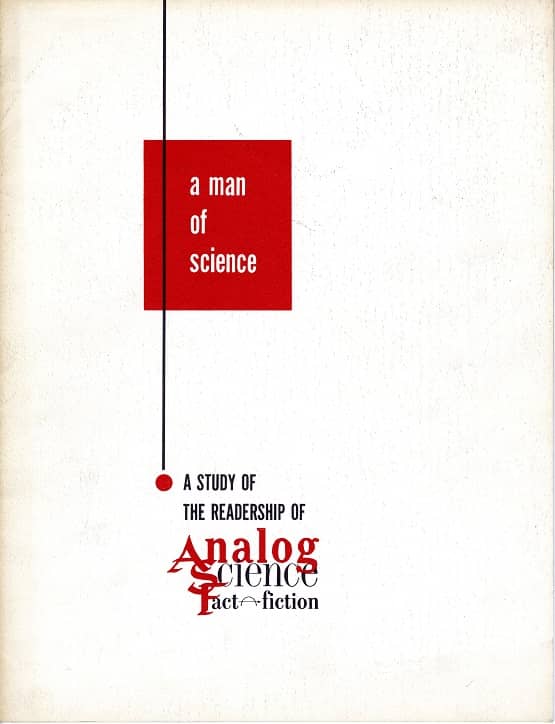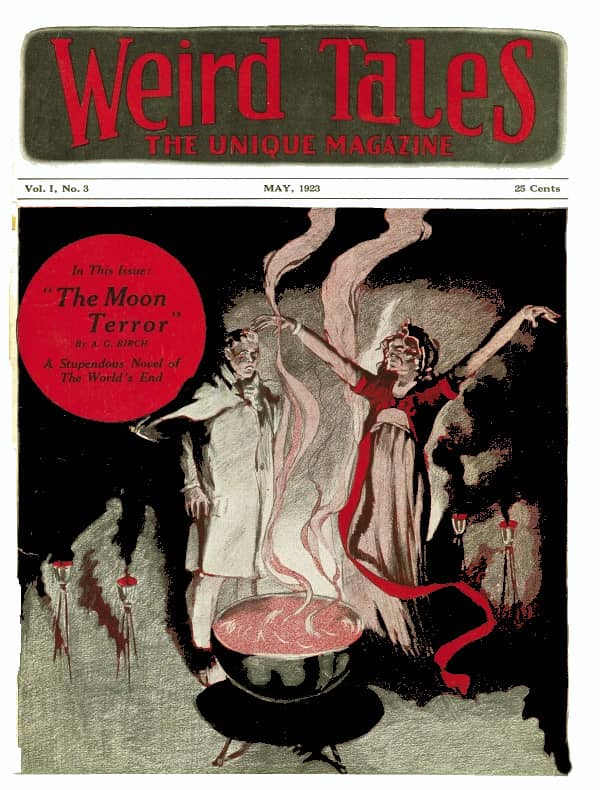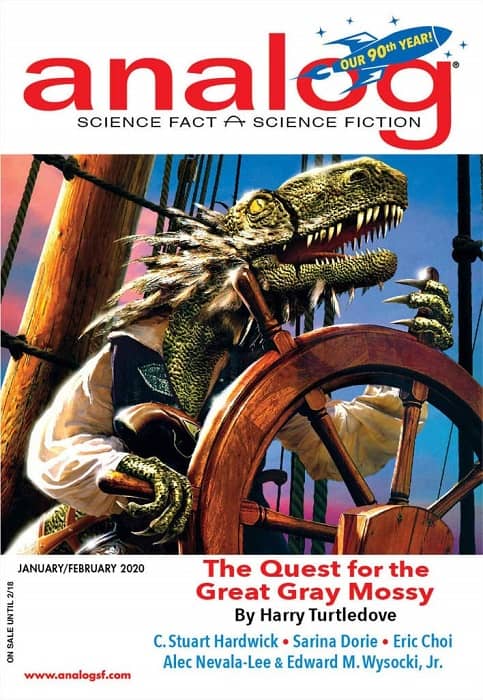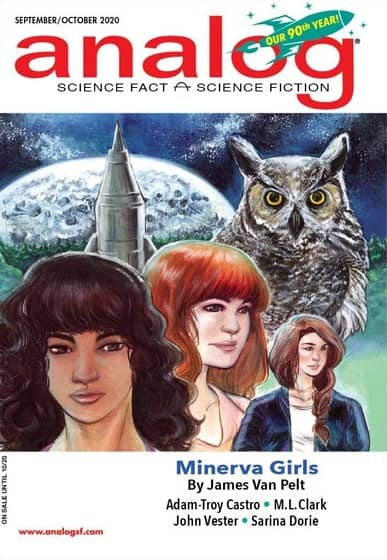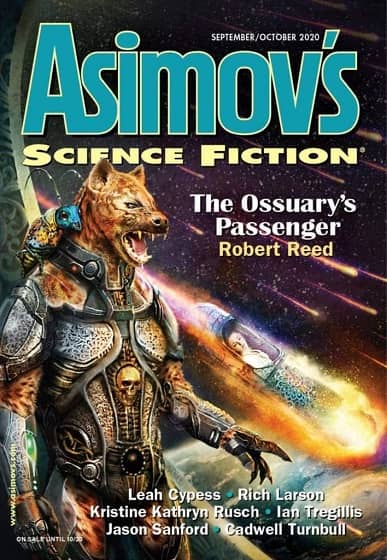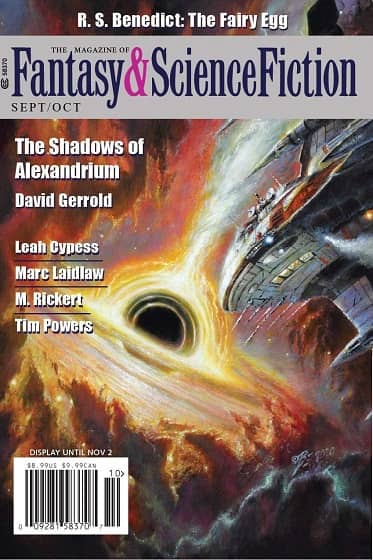A Tour of a Pop-Culture Phenomenon: Marvel: The First 80 Years
Marvel: The First 80 Years, magazine edition from Titan Comics. On sale November 2020
I was in Barnes & Noble yesterday, picking up some new releases, including a new Stellaris anthology and the latest Year’s Best anthology from John Joseph Adams (here’s the complete stack of titles I walked out with), and literally on my way out of the store my eye fell on a colorful cover in the magazine section. I reversed course to get a closer look, and three minutes later I was back in the checkout line, buying one more item.
The magazine was Marvel: The First 80 Years, a 160-page full color special release from Titan. It’s a little pricey, even with my B&N discount ($19.99 cover price), but according to the scant facts I can find on the internet, it’s a limited release magazine version of the upcoming book Marvel: The First 80 Years, scheduled for hardcover release in two weeks with a $29.99 price tag.
I didn’t know any of that yesterday, tho. I shelled out nearly 20 bucks for an oversize magazine because it looked more than worth the money. Have a look at the gorgeous interior photo spreads below and see if you agree.
